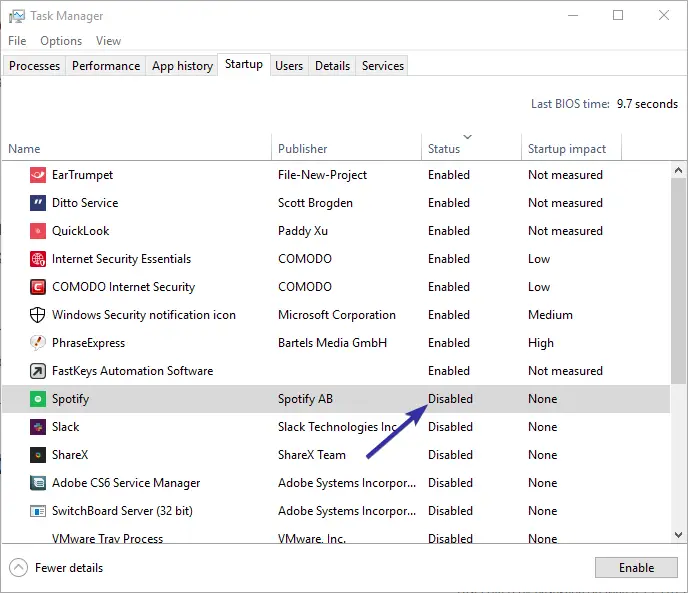

:max_bytes(150000):strip_icc()/001-how-to-add-programs-to-startup-in-windows-10-2ae393c398b14b1aa8d2c117b8b47820.jpg)
After that, click on Open to launch the Control Panel.Press the Windows key + S on your computer and search for Control Panel.To access the startup folder in Windows 10, you must first enable the ‘Show Hidden Files‘ option. Access the Windows 10 startup folder Using Windows File Explorer Now there are two startup folders in Windows 10, which are located in different locations. Instead, you can reset your PC by holding the Shift key while you click. This will take you to the Windows 10 sign-in screen. Because of this, the start menu was added back shortly after releasing Windows 10. Press the Windows logo key and L on your keyboard. However, when Windows 8 was released, the start menu was removed entirely from the operating system, which gathered a lot of criticism and negative feedback from long-time Windows users. The startup folder contains programs installed on your computer and is set to run automatically whenever your computer is turned on. In previous versions of Windows, the startup folder in Windows can be easily located in the start menu. Windows decided to add a dedicated graphical interface to its operating system to move away from using command lines and batch scripts to customize its startup folder.Įven though Windows completely changed how to include various programs to run during boot, the startup folder is still present in Windows 10. In the past, users would modify the batch script file using a text editor to include custom programs ready for use every time Windows boots up. Step 2:In the Runcommand box, type Shell:Startupand then hit the Enter key to open the Startup folder. In earlier versions of Windows, the startup folder in Windows would run a batch script that contained a list of programs that would run automatically along with the Windows operating system. How to open the Startup folder in Windows 10 Method 1 of 2 Open the Startup folder via Run command in Windows 10 Step 1:Open the Runcommand box by simultaneously pressing the Windows logoand Rkeys.


 0 kommentar(er)
0 kommentar(er)
